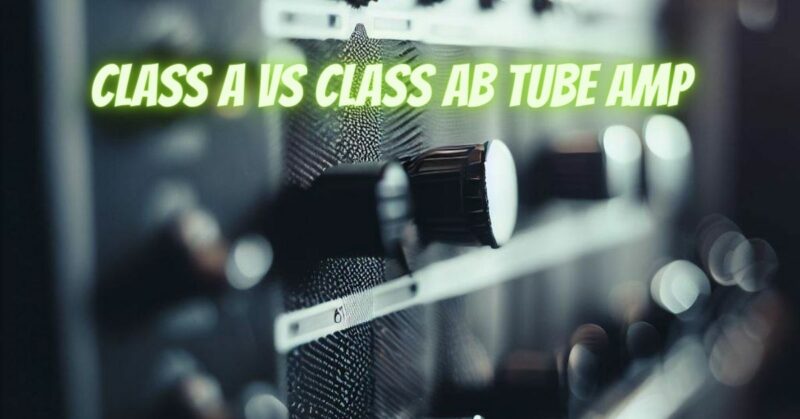Tube amplifiers are a type of electronic amplifier that uses vacuum tubes to amplify audio signals. Tube amps are known for their warm, rich sound, and they are often used in high-end audio systems.
There are two main classes of tube amplifiers: Class A and Class AB. Class A amplifiers are the most basic type of tube amplifier, and they are characterized by the fact that the output tubes are always conducting current, even when there is no input signal. This gives Class A amps a very clean and transparent sound, but it also makes them less efficient than other types of tube amps.
Class AB amplifiers are a compromise between Class A and Class B amplifiers. In Class AB amps, the output tubes are only conducting current when there is an input signal. This makes them more efficient than Class A amps, but it also introduces a small amount of distortion.
Advantages of Class A Tube Amps
- Clean sound: Class A amps have a very clean and transparent sound. This is because the output tubes are always conducting current, which minimizes distortion.
- Transparency: Class A amps are very transparent, which means that they do not add their own coloration to the sound. This makes them ideal for critical listening applications.
- Dynamic range: Class A amps have a wide dynamic range, which means that they can reproduce both loud and soft sounds with clarity.
Disadvantages of Class A Tube Amps
- Efficiency: Class A amps are not very efficient. This means that they require a lot of power to operate, and they can generate a lot of heat.
- Cost: Class A amps are more expensive than other types of tube amps. This is because they are more complex to build.
- Size and weight: Class A amps are typically larger and heavier than other types of tube amps. This is because they require larger power supplies and heat sinks.
Advantages of Class AB Tube Amps
- Efficiency: Class AB amps are more efficient than Class A amps. This means that they require less power to operate, and they generate less heat.
- Cost: Class AB amps are less expensive than Class A amps. This is because they are simpler to build.
- Size and weight: Class AB amps are typically smaller and lighter than Class A amps. This is because they do not require as large power supplies or heat sinks.
Disadvantages of Class AB Tube Amps
- Distortion: Class AB amps introduce a small amount of distortion. This is because the output tubes are only conducting current when there is an input signal.
- Sound: Class AB amps do not have as clean and transparent sound as Class A amps. This is because the distortion introduced by the output tubes can be audible.
Class A and Class AB tube amps have different advantages and disadvantages. Class A amps have a cleaner sound, but they are less efficient and more expensive. Class AB amps are more efficient and less expensive, but they introduce a small amount of distortion. The best type of tube amp for you will depend on your individual needs and preferences.
Which type of tube amp should you buy?
The best type of tube amp for you will depend on your individual needs and preferences. If you are looking for the cleanest and most transparent sound, then a Class A amp is the best choice. However, if you are looking for an amp that is more efficient and less expensive, then a Class AB amp is a better option.
Ultimately, the best way to decide which type of tube amp is right for you is to audition a few different models and see which one you prefer.


